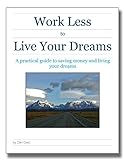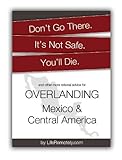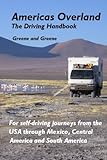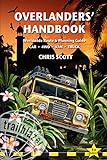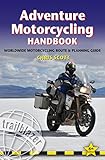Overland Bolivia Travel
Pan American Highway > Bolivia
Currency to display:
Contents
- 1 Visiting Bolivia
- 2 Entering Bolivia with a Car or Motorbike
- 3 Driving in Bolivia
- 4 Gas and Diesel price in Bolivia
- 5 Safety and Security Considerations
- 6 Camping in Bolivia
- 7 Navigation
- 8 Special Overland Travel interests
- 9 Vehicle Maintenance
- 10 Buy or sell a car or motorbike in Bolivia
- 11 References
- 12 Helpful External links
Visiting Bolivia[edit]
Bolivia is a spectacular and harsh country to visit. Many Overlanders consider the Salt Flats and Atacama Desert a standout highlight of South America. Borders are simple and safety is not a big concern.
Entering Bolivia with a Car or Motorbike[edit]
Correct as of: December 2015
Required Paperwork[edit]
(To check if you need a travel Visa for Bolivia, application instructions and fees see: Bolivia Visa online application at VisaHQ.com)
- Passport of registered owner (original and one copy)
- Vehicle registration (original and one copy)
- Insurance (it appears some people are asked for this, most are not)
- US citizens are required to have a visa to enter Bolivia. When traveling south, visas can be obtained at the Bolivian embassy in Puno, Peru and in Desaguadero on the Bolivian side of the northern-most bridge in Desaguadero.
Process at border[edit]
- The owner of the vehicle gains entry at Immigration (Migración), usually with a tourist card, including a stamp in their Passport.
- The owner must show the new passport stamp and original vehicle registration to Customs (Aduana).
- The owner is issued a temporary import permit for the vehicle.
- The police might record the information from your new temporary import permit before you leave the border and stamp the other side of the permit. They might also ask you if you have all the required items in your car (including wheel chocks and insurance). If you say you don't, they will ask for a "voluntary contribution" = bribe. Say politely you don't understand, take the stamped permit and leave.
Cost of entry[edit]
Free for the vehicle.
US citizens $160.00 USD (as of June 2015) can get the visa at the border immediately, without waiting; no need to apply ahead of time. Clean, crisp US dollar bills only. Make sure they haven't been marked with pen or permanent marker either.
Permitted length of stay[edit]
Usually the same as the owner, which is 30 days for most Nationalities. Just explain you want to explore the country and need 90 days. If they tell you it's easy to extent, just tell a nice story about a friend that had big problems extending his temporary import.
Further info: EU passport holders at least (maybe most nationalities) are allowed 90 days per year. Some borders will give full 90 days on entry, but you may have to ask and not if you have previously entered that year (using up some of your 90 days already), in which case you get another 30 days, which you can extend later. Vehicle permit matches owners entry visa.
Extension of stay[edit]
If you are only given 30 days at the border, it is relatively simple to extend your stay. We believe you can only do this within 5 days of your visa and TIP's expiry, but we are not certain if there is a way around this. The process in La Paz is as follows (EU passport holder; the locations are on iOverlander):
STEP 1: extend your personal entry visa in your passport
This is very quick and easy in the Migraciones office, on Av. Camacho in the centre of La Paz, here: -16.499657, -68.132479
As well as your passport and your immigration card/paper you got at the border, you must take photocopies of its photo page, the existing entry stamp, the visa, and your immigration card. As you enter, you will get directed to a reception desk where they will check you have the necessary photocopies, then they will give you a number and direct you to wait for the correct counter. You get additional 30 day stamp(s) next to the existing stamp.
STEP 2: Take your vehicle to the Aduana office near the airport in El Alto to extend the TIP
The entrance to the Aduana compound up in El Alto is here: -16.52011, -68.17012 When you drive in, your passengers will have to step out the car and enter via a pedestrian entrance. Once inside, they can join you in the vehicle again to drive on to the office (500m down the road and turn through the second gate left into the car park). Enter the building in front and go to the hatch immediately to the left of the door, labelled "Ventilla Sivetur y Placas Clonadas". They will deal with you there.
You will need:
- Your passport with your personal visa showing sufficient time (ie with your extension);
- Your vehicle registration documents;
- Your current temporary import permit;
- A letter explaining why you want the extension (may or may not be necessary, but we took one as per blogs below and the guy seemed to appreciate it because it explained what we needed in Spanish);
- Photocopies of all the above (there is a shop next to the car park that does photocopying).
You must have your vehicle with you as they will want to inspect it. They were quite efficient when we were there (all done within an hour). Opening hours 8.30am - 4.30pm but they might be shut between 12pm and 2pm for lunch.
Good blogs with information are (the second has a model request letter at the end; be aware that the GPS for the location of the Aduana is wrong in the first one):
http://www.landcruisingadventure.com/bolivia-car-papers/
http://www.down2earthtravel.com/travel-tips/down-to-earth-travel-tips-bolivia/
Prorogación. At least 1 week before expiration date at migración (person) and aduana (vehicle). Also in cities like Santa Cruz, Cochabamba, La Paz, Oruro.
Storing a vehicle and temporarily leaving the country[edit]
You can store your vehicle and leave the country, so long as you return and exit the country before the temporary import permit expires. http://www.aduana.gob.bo/aduana7/content/ingresar-territorio-bolviano-en-veh%C3%ADculo-particular
"Maximum: The maximum period of stay in Bolivia granted to tourist vehicles is six (6) months, extendable for another equal period, conditional on the length of stay granted in the tourist's visa. For those tourist vehicles that need repair or have had accidents with partial destruction, the period of stay at the nearest customs administration may be extended, and the following documents must be presented when applicable:
-Document certifying the accident with partial destruction, issued by the National Police.
-Repair document, issued by a legally established mechanical service establishment and location sketch of the mechanical service establishment.
The customs administration may require more documentation, when it considers it necessary: Stolen tourist vehicles For stolen tourist vehicles, the tourist will present to the nearest customs administration a copy of the document certifying such situation, presented to the Vehicle Theft and Prevention Directorate. . Important If, once the authorized period of stay has expired, you have not left Bolivia, THE TOURIST VEHICLE WILL BE SEIZED."
Exiting with a vehicle[edit]
- The registered owner presents the temporary import paper to customs.
- The registered owner is stamped out of Bolivia at immigration.
Driving in Bolivia[edit]
Recommended books for Overlanding in Bolivia[edit]
Travel insurance for Bolivia[edit]
World Nomads offer the most flexible Travel Insurance at the best prices for multi-country / multi-year trips. You can buy, extend and claim online, even after you've left home.
Vehicle insurance requirements[edit]
Insurance is mandatory in Bolivia, however it's difficult to purchase because the vehicle will not be in the Bolivian computer system. Many people simply show the police SOAT insurance (Seguro Obligatorio Automóviles Transito) from another country (i.e. Ecuador or Colombia)
Cost of insurance[edit]
About $10.00 USD for a year.
Where to purchase insurance[edit]
Delta Brokers, small passage on Loaza street in La Paz, GPS: S16.499098 W68.1333 (about $10.00 USD for a year for a casa rodante)
UPDATE: Buying SOAT in La Paz, Bolivia (not available at the northern border, not sure about south). Delta Brokers, mentioned above, could not sell to us. Go to Seguros Illimani, Edificio Villanueva, Av. Camacho at. It's a narrow, quite dark and unsigned, passageway that is right next door to Banco Bisa (left side of the bank entrance). Illimani is on second floor. It is half a block from the Seguros Illimani head office, the address of which is cited on other travellers' blogs as the place to buy SOAT, but you actually have to go to this sub-office. The head office is 10th floor, Edificio Mariscal de Ayacucho, Callé Loayza n: 233. GPS - S: 16,49881 W: 68,13324
July 2014: I was able to buy a policy at Delta Brokers, small passage on Loaza street in La Paz, GPS: S16.499098 W68.1333, address Edificio Mariscal de Ayacucho, Callé Loayza n: 233. The policy they sold me supposedly covers Bolivia, Paraguay, Peru, Brazil, Argentina and Chile and cost $130.00 USD for 12 months for a 4x4 camper. It is issued by Illimani which has offices in the same building. I went in to see them in the morning and had to return late afternoon. The policy does not seem to cover very much but hopefully will meet the minimum insurance requirements.
Update May 2015: bought the SOAT in the Mariscal Ayacucho at the first floor in Oktober 2014 with no problem. 10th floor the SOAT for Mercosur countries for 200$/Year for a Toyota Landcruiser.
In May 2015 we bought the SOAT in Potosi at the Allianz Insurance at S19.58815° W65.75536°. Illimani office is also near there. Took 15min to get the SOAT. Very narrow road, bad to park.
Update Jan 2018:UPDATE re Buying SOAT in La Paz, Bolivia: the office in Sopacachi that used to sell Soat as recently as late 2017 no longer sells it to foreigners. The only place to buy SOAT as a foreigner in La Paz is Univida on Avenida Comacho in the downtown area VERY near to the migration office where you extend your entry permit in 30 day increments.
Driving license[edit]
Technically an International Driving Permit is required.
In reality, showing a license from anywhere in the world seems to be good enough.
Driving side of road[edit]
Right,
Right hand drive vehicles are permitted. Police or checkpoints that say otherwise are bribing you.
Mandatory items in vehicle[edit]
Two safety triangles, a first aid kit and fire extinguisher are mandatory and a very good idea.
If you do not have these items with you, the Police will have an extra excuse to demand a bribe from you.
Roads[edit]
General Road quality[edit]
Roads in Bolivia are typically very poor quality. Only a few major highways are paved, everything else is gravel that ranges is commonly rutted, full of pot holes and extremely dusty. Be prepared for some very, very difficult driving conditions.
Road signs[edit]
Road signs do exist, but are far from common. Most towns have at least one sign stating the name of the town and distances to the next towns.
Signage for roadwork is nearly nonexistent. Highways can transition from pavement to gravel with a 4 inch or larger drop with no warning at all.
Toll roads[edit]
All paved roads at tolled, you can expect to pay around $b15.00 BOB every 50 - 100km
Bribery in Bolivia[edit]
Police bribery is extremely common in Bolivia. The Police will try many different tactics to get money from you, often mentioning a "voluntary donation".
In the Santa Cruz area they tried to sell us an "order de translado" for 30BOB. You DON'T need that! It's only if you have a car on a trailer!
See the bribery tips page for advice.
Checkpoints[edit]
Police checkpoints are very common in Bolivia, where the Police are trying to stop the spread of stolen vehicles. Where a barrier blocks the road you will be asked to go inside and present your Passport, Vehicle registration, drivers license and the temporary import permit you were issued at the border. They may also ask if you have the Mandatory items with you. It is extremely common to encounter bribery at these checkpoints. They will ask for money in a variety of ways, usually in a friendly, non-threatening way. See the bribery tips page for advice.
Traveling with pets[edit]
As in Peru there are no special requirements needed to enter Bolivia with pets. Usually nobody cares about pets in the car. There are lots of stray dogs in Bolivia. n the Beni and Yungas area they are in bad condition, in the altiplano better. But many times the stray dogs are in bad condition and with diseases. Special care must be taken to keep your pet immune. Special care must be also taken when traveling in warmer regions as like in all south America there is risk of the heart worm. People usually do fear dogs to some extent and will keep distance to your dog, especially if it's on a leash since they consider such dogs as "aggressive dogs". Dog food can be only found in bigger towns with bigger stores at different quality and prices. Bigger veterinarians also carry special dog food but it's in general more difficult to get good dog food. More infos can be found here
Gas and Diesel price in Bolivia[edit]
Last updated: June 2015
In the Altiplano area foreigners are supposed to pay a "surcharge" to purchase gas and diesel, which is triple the listed price. Usually at around 8.9BOB/Liter for Diesel. Jerry cans are officially also illegal to fill.
This is theoretically enforced from La Paz down to Uyuni and Potosi and Sucre and even Tupiza and Tarija with video cameras or police officers. But outside of the bigger cities it's usually possible to deal a special price. We got a little bit outside La Paz a 4.4BOB price, between Oruro and Uyuni 5-6BOB and even in Uyuni 6BOB. It all depends on your Spanish skills and if you are willing to discuss with the people. We also got once a 4.5BOB price although the police officers was standing there.
But important is to say "sin factura" to let them know, that you want to buy it at the local price and the difference is for his pockets.
As soon as you get into the low lands, especially Beni nobody knows about this gringo price and everyone pays the local price! So fill your tanks!
In Tarija they accepted jerry cans but we had to park the car behind the gas stations and walk 5 times with the jerry cans, although it's officially illegal.
For cheap local prices, you can get a "friend" (or local) to take your spare jerry cans, go fill up and bring them back to you, with a little donation along the way. This worked for us when getting some car work done.
The prices listed here are the local price. Expect to pay three times more if you can not haggle the price down
Bolivia has rules about gas which are complicated. Some gas stations have police guarding to make sure the attendants don't oversell gas to narcos or foreign plated cars. Fancier gas stations have a video system which records images of each car getting gas. All gas stations are supposed to record both the license plate and the driver's ID. This causes long lines at gas stations.
Most smaller towns don't have gas stations (Surtidores) but folks buy gas at normal stations and have tanks. Quality of this gas is to be questioned but in some places like Uyuni to Chile it's the only option.
Currency and unit to display:
| Gasoline Grade | Price |
|---|---|
| Regular | $b3.40 BOB per Liter |
| Diesel | $b3.70 BOB per Liter |
- Price Information: gasoline-germany.com - International Gas / Petrol / Diesel prices - Bolivia
Gas and Diesel Availability / Frequency[edit]
Line-ups to purchase gasoline and purchase limits are a very common occurrence in Bolivia. Purchase a full tank of gas at every opportunity.
Gas stations are frequent, except south of the Salar de Uyuni towards Chile.
Gas and Diesel Quality[edit]
Gasoline and diesel are generally thought of as extremely poor quality. Gasoline is thought to have a very low octane rating, and diesel has a very high sulfur content and low cetane number. Maybe change your diesel filter after a Bolivia trip since the diesel is also dirty. Water in diesel was never an issue.
CNV (compressed natural gas locally known as GNV) is very popular as an alternative fuel for cars/trucks. You see yellow tanks underneath the backs of trucks etc. and some gas stations only serve GNV. It appears to be quite cheap, but it's not known if a "tourist" fee applies (likely). LPG (known locally as GLP) is not available at fuel stations.
Safety and Security Considerations[edit]
Driving at night[edit]
Driving at night is not recommended.
- Extremely poor road quality means potholes, washouts and other hazards are common.
- Dangerous driving such as tailgating, overtaking around blind corners and excessive speeding are common.
- There can be many objects on and around the road that are nearly impossible to see at night, such as livestock, people, slow moving carts, cars with no lights, etc.
Vehicle parking[edit]
Parking vehicles on the street in smaller towns during the day is typically OK. Find a secure parking lot in big cities and at night. Cost is around 5 Bolivianos per night.
Special driving considerations[edit]
The roads in Bolivia are notoriously bad, so be extra watchful for road hazards like potholes, washouts and bad roads in general.
Drugs and related problems are increasing around Santa Cruz, probably the most dangerous part of Bolivia. The roads to Brazil in the East are more dangerous than elsewhere in the country.
Security advisories and information[edit]
- Country Specific Information - U.S. Department of State
- Travel Reports and Warnings - Foreign Affairs and International Trade Canada
- Travel advice by country - Foreign and Commonwealth office (U.K.)
- Travel Advice for Bolivia - Australian Department of Foreign Affairs and Trade
Camping in Bolivia[edit]
Camping is not common or popular in Bolivia, though a few hostels in touristy areas have camping to cater for backpackers.
There is a new fully-equipped campsite in Jupapina near La Paz which offers a beautiful natural setting but within easy teach of the city. http://www.colibricamping.com
Prices for camping at hostels fluctuates with the tourist seasons - check a backpacker guide book.
Many Overland travelers roadside camp on the Salar de Uyuni and further South, and consider it safe enough. Note the overnight temperatures can be extremely low.
Camping guide books[edit]
No specific book exists, though the usual backpacker guide books mention when a hostel has camping facilities.
Drinking water[edit]
Tap water in Bolivia is not safe to drink. Every corner store sells 1 and 2 liter bottles, while 20 liter bottles are extremely difficult to find (possibly only available in La Paz). The water in Tarija have a good quality is safe to drinnk.
[edit]
Paper maps[edit]
Reise Know-How are amoung the best paper maps. Purchase paper maps before arriving in Bolivia
Maps of Bolivia are difficult to find, and road conditions change daily. Purchase maps before arriving in Bolivia.
GPS Maps of Bolivia[edit]
- Open Street Map: Appears to have good coverage.[1]
- Garmin: No map of Bolivia.[2]
- TomTom: No map of Bolivia. [3]
- Bolirut has pretty decent coverage [4]
- Proyecto Mapear has great coverage and version 10.0 also includes Argentina, Uruguay, Chile and Paraguay [5]
GPS co-ordinates for camping, propane, gas, repairs, etc. in Bolivia[edit]
- iOverlander is a website and iPhone application designed by Overlanders, for Overlanders. It contains GPS co-ordinates and reviews for camping, hotels, propane, water, mechanics, borders and much more.
- Places in Bolivia - Camping Places, Food & Sights in Bolivia from Pawsontour. In German only
- Campsite Listing - South America | PanAm Notes - List of campsites, with directions and GPS co-ordinates. Some at hotels (lists facilities and price), some roadside and free.
- Andes Expedition camping Locations - List of campsites, with basic directions and GPS co-ordinates. Mostly free sites.
- Camping Log 2: South America - List of campsites, shopping, fuel, propane and border crossings with excellent descriptions and GPS co-ordinates.
- Hackney Travel SA Waypoints - Raw GPS data (in gdb or gpx format) for waypoints (including campsites, fuel, repairs, propane and more)
- The Silk Road Motocaravan Network - Raw GPS data for waypoints (camping, gas, propane, points of interest and more)
Special Overland Travel interests[edit]
- The Salar de Uyuni - The breathtaking Salt Flats are high on the list of every Overlander traveling across South America. Purchasing gas in Uyuni can be difficult depending on the time of year, day of week and who serves you. When supply is limited you will almost certainly be charged the "tourist" rate (double the normal price) and will not be allowed to fill containers. Plan accordingly. Enter the salt flats in Colchani, a short but extremely dusty and bumpy ride from Uyuni. When entering or exiting the salt flats it's important to drive on the most worn tracks to avoid sinking into the very soft salt/mud/muck. Following the black tire tracks on the actual salt is the easiest way to navigate. Many people have also put their GPS tracks online so you can be sure to go the right way. [6] After leaving the salt flats, be sure to thoroughly wash the underside of your vehicle to remove the salt.
- Nicest part of the Salar de Uyuni is the northern part. Coming from Oruro, direction Uyuni, take the unpaved road north of the Salar to Salinas de Garcia (very cheap and nice hotel at the plaza. They have a gas station, both diesel and gasoline). Then left or right around the Vulcano to Tahua, where you can get on the Salar. The salt here is very white, and there are a few nice little islands. Isla de Pescador, which you can see from the coast, is a very nice and quiet place to camp out. Huge cactusses and a great view in every direction.
- An Overlanders Guide to Bolivia's Southwest Circuit
- Salar De Uyuni
- South to Chile through the Altiplano - Overlanders looking for further adventure can continue South from the Salar, cross the Atcama desert and finally arrive in Chile. The total distance between gas stations is approximately 615km[7], and takes around 1 week. There a no official gas stations along they way, only occasionally people selling on the side of the road from a container. Food and water are equally as scarce, so you must be prepared. Temperatures swing wildly from hot, dry days to extremely cold nights, well below freezing. Navigation is very difficult as roads are almost non-existent and signs even less likely. This discussion on the Horizons Unlimited Bulletin Board has a list of GPS way-points for the major places and required turns. This route is extremely remote and demanding on even a well-equipped 4x4 vehicle.
When taking this route, note that customs is on a turn off (over a hill and out of sight) 80Km before the immigration border post, and the actual border with Chile. At GPS:
- Turn for Customs (Southbound) S22 24.958 W67 46.749
- Turn for Customs (Northbound) S22 25.488 W67 46.426
- Hito Cajon – Actual Customs Building S22 26.438 W67 48.346
Customers will keep the original vehicle permit and give you a stamped photo copy to take to Immigration. Many overlanders make this journey, you can read many trip reports such as Overland Guide to Bolivia’s Southwest Circuit | PanAm Notes, An Overlander’s Guide to Bolivia’s Southwest Circuit | fromalaskatobrazil, Bolivia's Southwest Circuit
- The Road Of Death - The infamous South Yungas Road gained the title of "World's Most Dangerous Road" and is a popular detour for mountain biking tourists and Overland travelers. Drive with extreme caution on this road where honking your horn around every corner is highly advised.
Vehicle Maintenance[edit]
Dealers[edit]
4x4s / Trucks
- Toyota Global Dealer Locator
- Land Rover International Dealer Locator
- Mercedes Benz International (select country on bottom right)
- Jeep International site locator
Motorbikes
Local Garages[edit]
- Iguana 4X4 - Bogota | Mechanic GPS: 4.714733, -74.055795 Perhaps the most overlander friendly mechanic you will find. Large shop which primarily focuses on 4x4 accessories, but have good all around mechanics. Offer free camping, usually including bathrooms, electricity and water. Great prices.
- Ernesto Hug at Volks Auto Shop in La Paz speaks English and is very friendly and helpful.
- Julio in Sucre is knowledgable and prices are very reasonable. This is a simple workshop, specialized in VW bugs and Kombis, but they do all kinds of vehicles, such as a Toyota Hiace 4x4. GPS: S19.04513 W65.24768. Shop is not marked, look for a larger gate between a copy shop and a dentist.
- Alex Mecanica in La Paz Av Muñoz Reyes No 6 Koani Telephone: +(591) (22) 2791230, 2148230
Buy or sell a car or motorbike in Bolivia[edit]
Buy
A foreigner can buy a Bolivian vehicle. If you plan on leaving Bolivia with the vehicle, make certain all the papers, including any insurance are in your name. This process is often so difficult most Bolivians simply leave the name of the previous owner on the paperwork - you will not be allowed leave the country without changing the ownership papers to your name.
Buy
Unknown.
Describe how a foreigner can sell a foreign-plated vehicle, or list not possible.'
References[edit]
- ↑ OpenStreetMap Bolivia
- ↑ Garmin coverage map
- ↑ TomTom Map availability
- ↑ Bolirut
- ↑ Proyecto Mapear
- ↑ Garmin track log
- ↑ The Uyuni Salt Flats to Chile Pt. 2
Helpful External links[edit]
- Bolivia: Visa and Passport requirements | World Travel Guide
- Health Information for Travelers to Bolivia - Center for Disease Control and Prevention
- Bolivia travel guides at wikivoyage
- Bolivia - Wikipedia, the free encyclopedia

